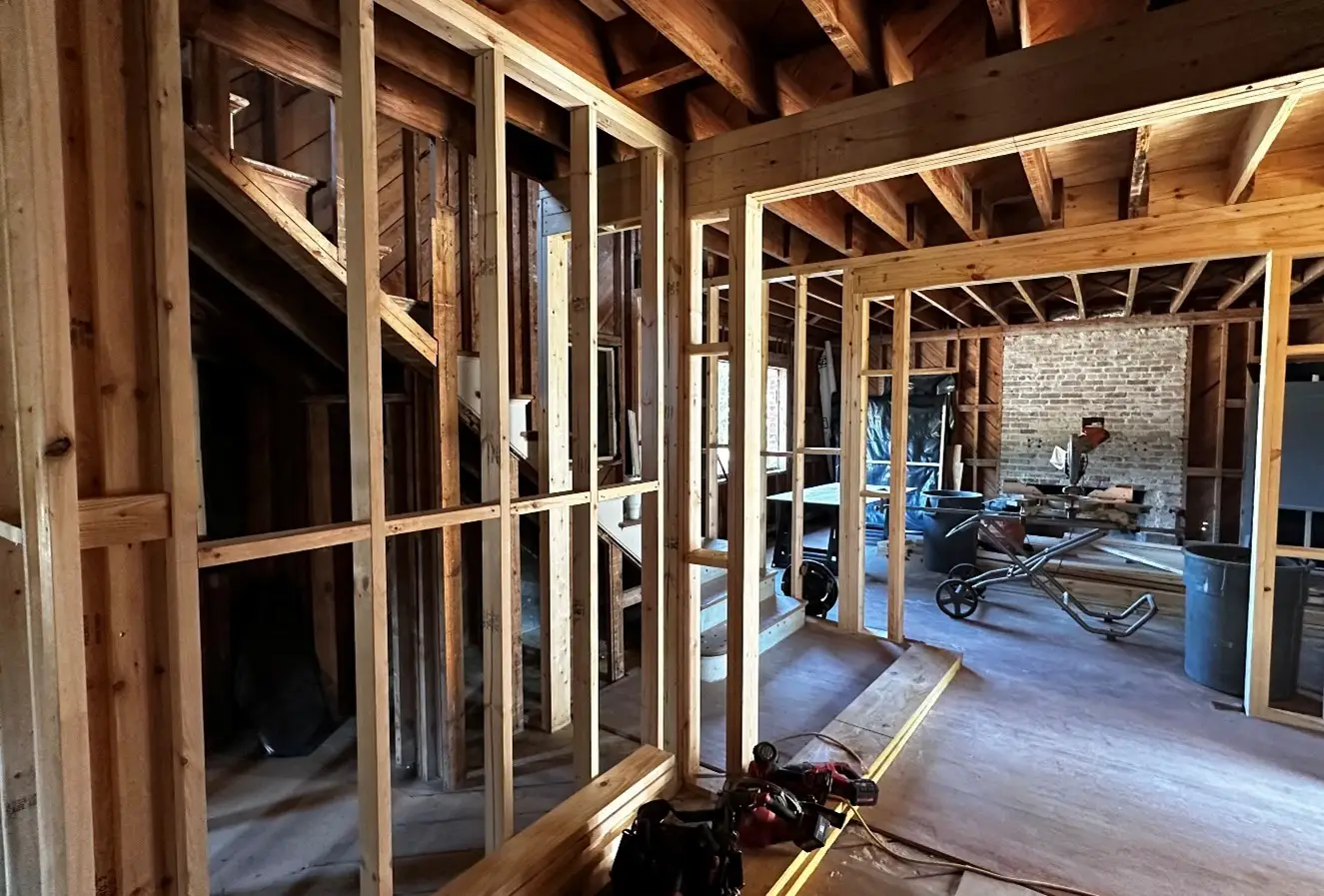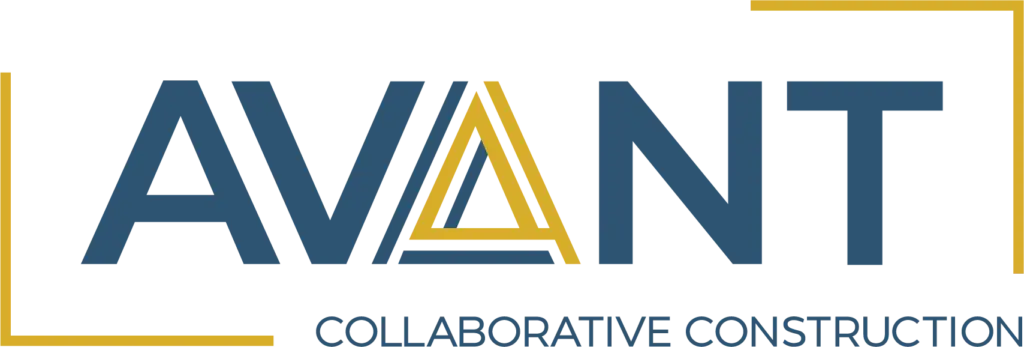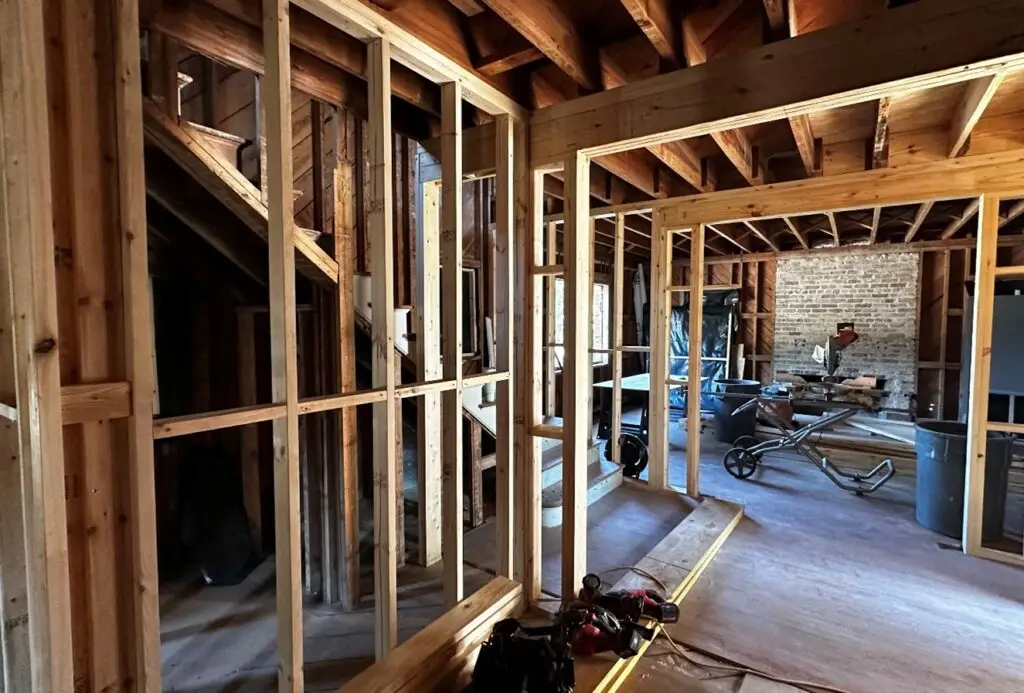When working on a house that’s nearly 100 years old, every decision feels like walking a tightrope. Or as we like to say on site, todo cuidado é pouco – “all care is little.” One wrong move, one hammer swung in the wrong place, and this proud brick beauty that has stood for nearly a century could come crumbling down.
This is the reality of restoring 1106 Eutaw Place, a Mediterranean Revival–style home nestled in the tree-lined streets of San Marco. It’s not just a building, it’s a survivor. And we would hate to be the company remembered for bringing down a house that has stood tall on its own for so long.
But with every restoration project, decisions must be made. There’s no room for hesitation, yet no room for mistakes, either.
Scott Conard, our site superintendent, has taken an extremely cautious approach to this project. His philosophy is simple: “We’re not just rebuilding a house; we’re protecting a story. Every beam, every brick, once it’s gone, it’s gone forever.”
Already, his sharp eyes have identified one of the home’s most pressing challenges: a separation between the brick wall and the shear from the first to the second floor. Left unchecked, this structural weakness could jeopardize the entire building. Repairing it requires finesse and precision, there’s no textbook answer for a house like this.
And that’s just the beginning.
Restoring history means asking tough questions with no easy answers.

The balcony, one of the home’s signature features, is a masterpiece of design. Its graceful lines and delicate detailing make it a focal point of the exterior. But behind its beauty lies a startling discovery: the entire structure is supported by a single 1×10 piece of wood, what builders in the 1930s referred to as a “header.” Scott calls it “a work of art balanced on a toothpick.” Preserving its charm while reinforcing its structure will be no small feat.
The roof presents yet another challenge. The rafters, originally framed with ties running in the opposite direction of modern standards, leave us with a dilemma. Do we reframe the roof to meet today’s building codes, potentially altering its character? Or do we trust in the methods that have kept it standing for nearly a century?
These aren’t just technical questions, they’re philosophical ones too. What does it mean to restore a historic home? Where do we draw the line between preservation and modernization?
We know these won’t be the only challenges we encounter. In fact, they were among the first we faced after stepping onto the jobsite. But that’s the beauty of working on a house like this. It speaks in fragments, revealing its secrets one layer at a time.
“This isn’t a job you rush,” Scott says. “You’ve got to listen to the house. It’ll tell you where it’s strong and where it needs help.”
The entire Avant team, along with the owners of Eutaw Place, are ready to dive headfirst into this ocean of challenges. We are determined to find the solutions needed to bring this historic home back to life—not as a frozen artifact, but as a vibrant, lived-in part of Jacksonville’s present and future.
This is not just a renovation. It’s a delicate dance between the past and the present, and every step matters.

